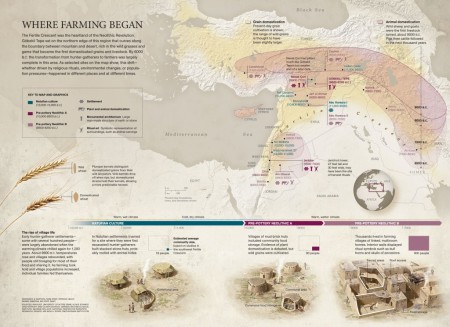Somehow we missed this great map of the Fertile Crescent from National Geographic. It came out just before Christmas, but we should have caught it, really. I hope they do similar ones for other cradles of agriculture around the world.

Agricultural Biodiversity Weblog
Agrobiodiversity is crops, livestock, foodways, microbes, pollinators, wild relatives …
Somehow we missed this great map of the Fertile Crescent from National Geographic. It came out just before Christmas, but we should have caught it, really. I hope they do similar ones for other cradles of agriculture around the world.
